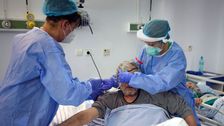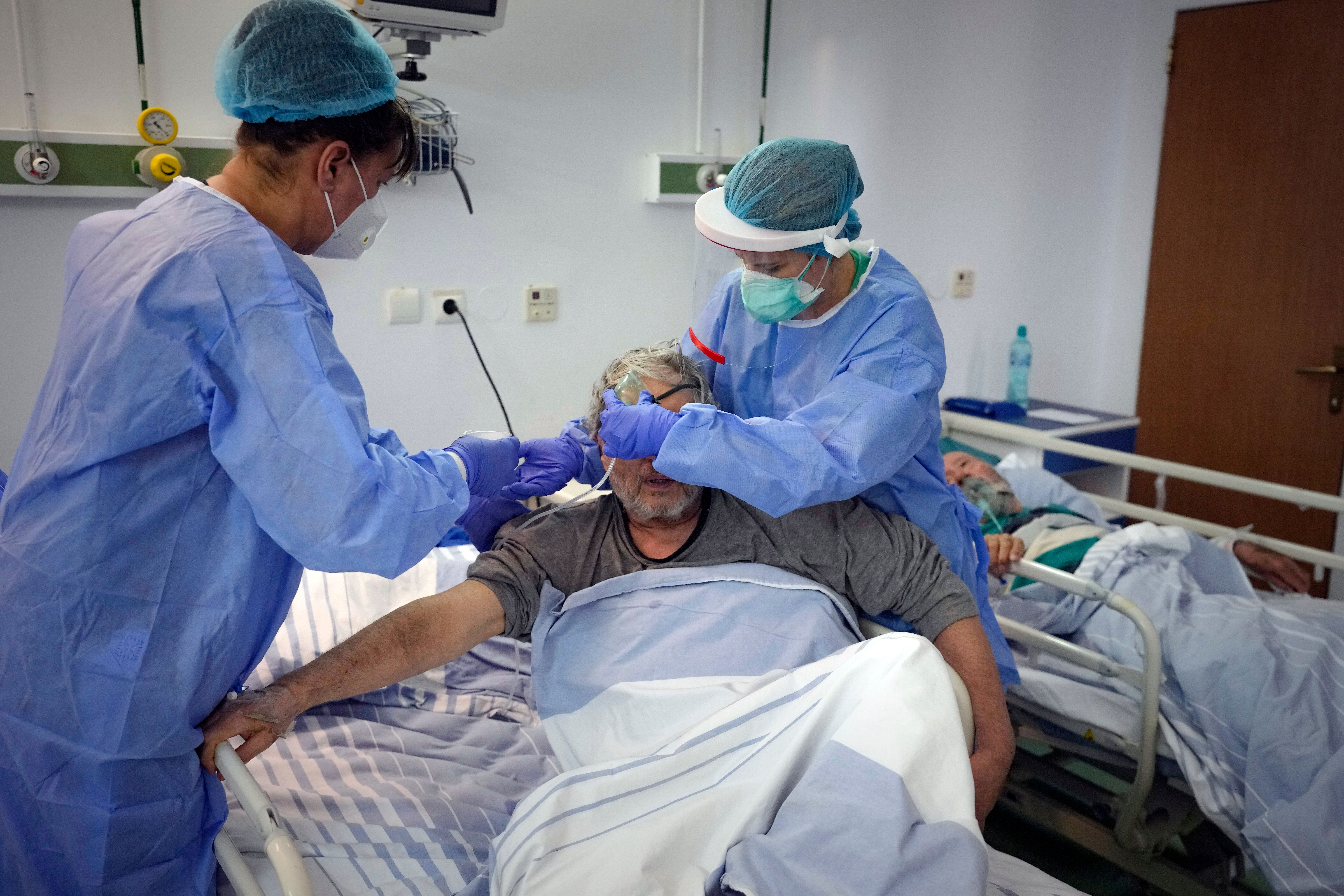

Europe has again become the epicenter for the COVID-19 pandemic, with the World Health Organization warning Wednesday that deaths from the coronavirus had risen in Europe by 10% over the past week.
The European region was the only one of the WHO’s six regions where cases and deaths had risen, with the other world regions staying stable or decreasing.
Advertisement
The coronavirus situation in Europe has been worsening over the last few weeks, and the new figures came as the U.S. on Monday reopened its borders to tourists from many countries for the first time in nearly a year and a half.
The WHO figures show a decline in cases and deaths in the Americas region. The United States has reported a 3% decline in new cases from the previous week and a 15% decrease in deaths.
But despite the declining trend in the U.S., Dr. Hans Kluge, the WHO’s regional director for Europe, told CBS News on Monday that Americans should be paying close attention to what’s happening in Europe.
Three factors are driving the surge, WHO Europe said in a statement sent to HuffPost: insufficient vaccination coverage; the relaxation of public health and social measures; and the highly transmissible delta variant that’s dominant in Europe.
Advertisement
Countries have taken different strategies to manage the coronavirus and are seeing different outcomes, but all are struggling in some way.
Countries with high vaccination rates like France, Spain, Denmark and the U.K. are focusing on booster shots, especially for older people as immunity wanes. Increased travel, loosened restrictions, schools back in session and more socializing indoors as the weather gets colder causes trouble everywhere with the highly transmissible delta variant in circulation.
The rate of vaccinations has been hitting a plateau in countries such as Germany.
Germany is seeing record case numbers this week, with nearly 40,000 new cases reported Wednesday. The country has varying restrictions in different regions and at a national level is resisting putting vaccine mandates into place. But the vaccination rate is leveling out, with about 67% of Germany’s population of 83 million fully vaccinated, and the holdouts firm in their resistance.
Advertisement
Eastern European countries are struggling with vaccine hesitancy as the delta variant moves through the population ― a “pandemic of the unvaccinated,” to use a phrase from U.S. government officials.
In Romania, hospitals and morgues have been overwhelmed as vaccine hesitancy has frustrated health officials. The country’s rate of fully vaccination is about 40% ― far lower than the European Union’s average of 75%, or America’s 58.2%.
Romania ― a country of 19 million people ― has been reporting some of the highest death rates in Europe, with 591 deaths on Nov. 2. More than 90% of the people who died were unvaccinated.
Kluge urged Americans to keep an eye on these trends and to learn lessons from Europe. “We need to keep pressure on the virus, not surrendering on masks, the hand-washing, indoor ventilation — particularly in the schools,” he said.
As for measures to combat the virus, “the earlier, the stricter, the better,” he said.
For the Thanksgiving and Christmas holidays coming up in the U.S., Kluge said Americans should celebrate safely, but “vaccinate and ventilate.”
The WHO European region stressed that vaccines minimize the chance of getting seriously ill, but stressed that fighting the pandemic should take a slightly different tack.
“We must change our tactics, from reacting to surges of COVID-19, to preventing them from happening in the first place. Vaccines are our most powerful asset ― if used alongside other tools,” the organization said.
This article has been updated to include a statement from WHO Europe.
Related posts:
Views: 0
 RSS Feed
RSS Feed















 November 11th, 2021
November 11th, 2021  Awake Goy
Awake Goy  Posted in
Posted in  Tags:
Tags: 
















